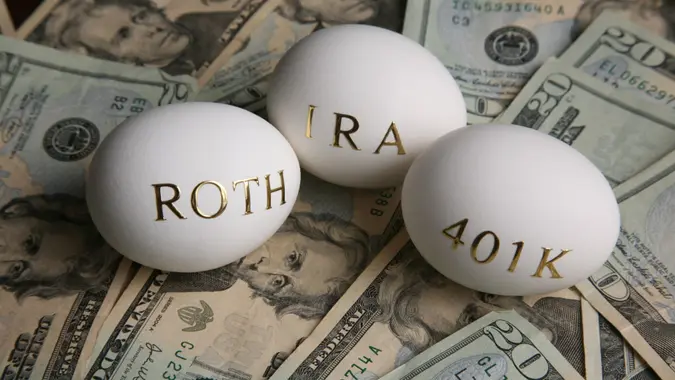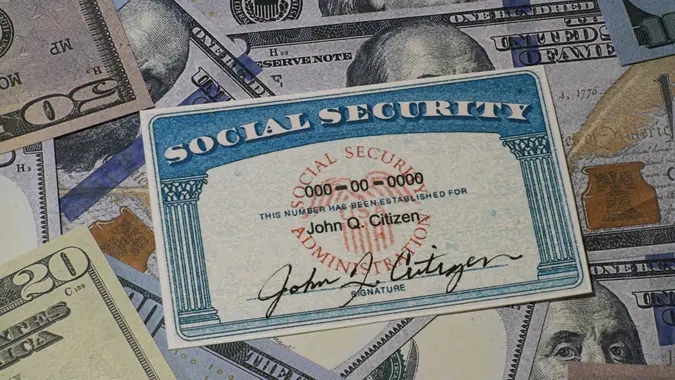How Retiree Expenses Change From Age 65 to 75

Commitment to Our Readers
GOBankingRates' editorial team is committed to bringing you unbiased reviews and information. We use data-driven methodologies to evaluate financial products and services - our reviews and ratings are not influenced by advertisers. You can read more about our editorial guidelines and our products and services review methodology.

20 Years
Helping You Live Richer

Reviewed
by Experts

Trusted by
Millions of Readers
Your spending plan during retirement isn’t static. A budget during your mid-60s may look extremely different compared to what it will be like in your 70s (and beyond). During the earlier phase of your retirement, you might spend more on travel and home upgrades to age in place, for example.
Still, during those “younger” years, you’ll have to consider healthcare and long-term care costs. Even if you end up spending less on dining out and travel, your overall expenses could still go up.
Understanding how your spending shifts from 65 to 75 can help you plan ahead. Here are some factors to consider.
How Spending Typically Changes From 65 to 75 Years Old
Often called the “go go” phase of retirement, you may end up spending more on dining, hobbies and travel. This could be because retirees finally have more time to spend on what they want instead of being tied up in a full-time job.
Some expenses may have gone down, especially if retirees have paid off their mortgage or sold one of their vehicles because it’s no longer needed for commuting purposes. Still, there may be some areas where expenses may go up. For one, healthcare costs can rise more than people expect. According to RBC Wealth Management, the average 65-year-old is estimated to spend $13,000 a year on healthcare.
Furthermore, Fidelity’s 2024 Retiree Healthcare Cost Estimate found that for those who retired last year, they could spend $165,000 over the course of their retirement. Hence, healthcare costs could go even higher as you age.
Then there’s the matter of inflation. Between 2020 and 2024, food prices went up 28.3%, according to data from the U.S. Bureau of Labor Statistics. The Center for American Progress reported utility prices have gone up across the U.S. between January 2021 and January 2025 by 26.3% for residential electricity and 28.3% for natural gas.
These increases could continue to climb as you age.
Long Term Care Could Impact Older Retirees
Aside from regular healthcare costs, retirees also need to take into account long-term care costs.
Yes, you may not need to worry about it until your late 70s and beyond, but it’s crucial that retirees plan for these increased costs. This is especially the case for those wanting to purchase a long-term care insurance policy.
Even though most long-term care isn’t needed until people reach their late 70s or 80s, it’s important to start planning for it between ages 65 and 75 while you’re still healthy and insurable.
CareScout’s 2024 Cost of Care Survey showed what you could pay for several common long-term care expenses. Those who need to live in assisted living communities could expect to pay a median cost of $5,900 per month, or $70,800 per year.
When it comes to nursing homes, you’re looking at a median cost of around $9,277 per month, or $111,325 per year for a semi-private room. If you want to splurge for a private room, that could set you back at a median cost of $10,646 per month, or $127,325 per year.
How To Prepare
It’s hard to tell exactly how much you will need and what expenses you’ll spend your money on, but it does pay to be prepared. Setting money aside for rising healthcare costs now will help you later on, considering basic Medicare coverage doesn’t totally eliminate out-of-pocket costs.
Reviewing your budget every quarter or year could help you assess whether your spending plan works for your current and future needs. If need be, talk to loved ones so they know what your preferences are when it comes to healthcare or other costs before a major event occurs.
 Written by
Written by  Edited by
Edited by 


























